Article from the section “Calendar of work for gardeners, market gardeners, flower growers.”
November is the last month when you can still prepare your garden for winter. Although we did not sit idle in October, there is still plenty of work in the garden and vegetable garden in November. So what do we have left to do in the garden?
Preparing the garden for winter
Your garden: work of the month.
Particular attention is paid to trees planted in October.
In November, it is necessary to carry out pre-winter watering of trees in the garden.
What is winter watering and why is it needed? Pre-winter watering is necessary for all garden crops. It should be carried out at the beginning of winter, when the ground is not yet frozen. Most summer residents carry it out in the last days of supplying irrigation water - in mid-October. They have no other option. For trees, later watering is more beneficial - in mid-November. The soil in the fall should be wetted to at least 60-80 cm. Water that penetrates to great depths creates a significant supply of moisture in the soil. This increases the winter hardiness of fruit plantations, which at low temperatures suffer from drying out, which is facilitated by high summer temperatures and lack of precipitation. Wet soil freezes to a shallower depth. Unstable snow cover or its absence in a frosty winter creates a serious danger of freezing of the root system. Moisture-recharging irrigation reduces this danger. Fill the tree trunk circles several times. You can combine watering with fertilization. Pre-winter watering is also a powerful means of controlling pests that overwinter in the soil. Correctly carried out pre-winter watering can reduce the number of vegetation waterings. Watering remains mandatory after flowering, during the period of ovary shedding in June, a month before fruit ripening and mandatory watering after harvesting.
After winter watering you need to mulch the soil in the holes, cover it with a layer of compost, manure or leaves. 6-8 cm thick. This technique helps retain moisture and accumulate nutrients.
As a result, the trees will take root well and will produce twice as much growth in summer as unmulched seedlings. Also insulate the root system of trees on a dwarf rootstock and columnar ones.
Before the soil freezes, the trees need to be covered with earth to a height of 25-30 cm. This will protect the roots from frost and from bulging after the ground settles. But in early spring, immediately after the soil thaws, the trees begin to grow.
Keep in mind: the care of trees the year they are planted often determines their development in subsequent years. If poorly cared for, trees cannot accumulate the necessary nutrients and are more often damaged by frost.
Protect the young non-fruit-bearing trees with weak bark from rodents and frost damage. Tie the trunks with kraft paper, light spunbond or old tights without gaps, right down to the ground. Sprinkle the bottom of the strapping with soil right next to the trunk. Then spud.
Prune trees planted in autumn in early spring, before buds open.
You can carry out sanitary pruning old apple trees, pears, plums, currant bushes and gooseberries. Cut out areas of bark affected by black cancer and cover with garden varnish.
Remove dry fruits and carrion from under the trees.
If you have not yet finished collecting and destroying rotten and dry fruits on trees, as well as carrion, hurry up and do not leave them in the winter.
Plum fruits can turn out to be not only rotten. In recent years, the number of plum moths has increased, which harms plum trees no less than the codling moth. The larvae of the fat stalk overwinter inside the seeds of fallen fruits.
If they are not collected and destroyed (cannot be put in compost). The number of pests will increase from year to year.
Dig up the soil in the tree trunk circles.
If you didn’t dig them up in October, do it now. Before this, there is no need to clear them of weeds if there are no seeds. Plant residues and green manure can rot in the soil, preserving the natural soil-forming process.
Improves soil structure, water and breathability. Plants grow and develop better in such soils. Mineral fertilizers will not replace fresh organic matter.
The green mass of weeds or green manure can be covered up when digging. The optimal rate for adding fresh organic materials to the soil is 0.5-1 kg per 1 sq. m. m.
At the same time, add nitrogen fertilizers into the soil (5-10 g of urea per 1 sq. m). Soil microorganisms, decomposing fresh organic matter, use soil nitrogen, and this depresses plants.
Do not try to exceed the dose of fresh organic matter, as this creates substances that inhibit plants. Place excess organic matter in compost.
In November, you can carry out the last treatment of garden trees against pests.
If lichens and moss appear on the trunk bark or skeletal branches, this means that this tree needs special care. In the spring, prune the crown to improve its light and ventilation.
In early November, cover trunks, branches inhabited by parasitic plants, with a 5% solution of iron sulfate using a brush (500 g of vitriol per 10 liters of water).
Can be cooked a solution of slaked lime with the addition of lye (dilute 150 g of lime in 10 liters of water, add 500 g of sifted wood ash and leave the mixture for several days, stirring occasionally). The mixture is applied to the bark with a brush. After a few days, the lichens will turn red and fall off.
In dry weather spray the crowns of fruit trees with a 5 percent solution of urea (500 g per 10 liters of water), and the crowns of berry bushes with a 3 percent (300 g) solution of iron sulfate. This will protect the plants from damage by anthracnose, lichens, and rust.
Finish cleaning the trunks and the bases of skeletal branches from the detached bark. Moisten the cleaned areas with a solution of iron sulfate - 500 g per 10 liters of water. If there is a lot of bark, coat the trunk with clay mixed with mullein or copper sulfate (200 g per bucket of a mixture the consistency of sour cream).
Heal wounds from frost damage or other reasons. Large wounds are cleaned with a sharp knife to a healthy place, then coated with garden varnish and bandaged with burlap. Shallow wounds are coated with garden varnish without stripping or bandaging.
If shoots have formed near the wounds, do not remove them until the wounds have healed. They promote wound healing.
If on the standard or a hollow has formed in tree branches, you need to thoroughly clean it of rotten wood to a healthy place, coat it with 5% iron sulfate (50 g per 1 liter of water). Then hammer the hollow with a wooden sleeve and coat it with oil paint. If the hollow is large, fill it with crushed stone and fill it with a mixture of cement and sand (1:3).
Until the coming frosts, complete whitewashing the trunks and bases of skeletal branches with lime (2.5 kg of lime, 1 kg of clay + 300 g of copper sulfate) or ready-made garden paint. The trunks of young trees (up to 4-5 years old) are whitened with chalk or tied with light non-woven material.
Don't forget to mulch the strawberries.
Freezing of strawberry plants occurs when the temperature drops in late autumn to minus 10 degrees, and in early spring - to minus 7 degrees, in the absence of snow cover.
In snowless winters plants die at minus 15 degrees. Even light snow cover dramatically increases the frost resistance of strawberries.
For mulching You can use humus, compost, peat, fallen tree leaves. If the weather forecast promises increased frost, you need to sprinkle the plants completely to protect the hearts and apical buds.
At the end of November, look at how apples are stored
Try to ventilate on cold nights, storehouses with fruit to reduce the temperature to 4-5 degrees and at the same time increase air humidity.
These are the main works, which must be completed in November in the garden. Now let's see what awaits us in the garden.
What to do in the garden ahead of winter
Your garden: work of the month.
The last month of autumn is unpredictable. He may be generous with warm days, or he may “reward” him with snow and frost ahead of schedule. So urgent gardening tasks need to be completed as soon as possible.
On the warm days of November Those who did not have time in October can still plant garlic before winter. Immediately after planting, mulch the bed with compost and humus so that the soil in the root zone does not freeze longer and the cloves have time to take root.
Don't delay and winter planting of onions. This should be done first of all by those who buy onion sets in the fall. Hot varieties of onions are suitable.
Most often in stores you can buy sets of the Stuttgarter Riesen variety. Select the smallest bulbs for planting - 1 cm in diameter or less.Onions planted in the fall can be damaged by frost in snowless winters, so it is better to play it safe and leave larger sets for spring planting.
In addition, large sets, when planted before winter, produce many bolting plants. And this, of course, is undesirable.
Onions are planted when Cold weather will set in, the soil will cool, but will not freeze yet. If you plant early, the onions will begin to grow feathers and will not overwinter well; if you plant them late, the onions will not have time to take root, which will also negatively affect their safety.
It is very important that the bed allocated for planting onions was not flooded during thaws. On a flat (without sides) area, we make grooves 12-15 cm apart, 3-4 cm deep, and place the onions in them, 3-4 cm apart.
Such a dense planting before winter is justified. If there are no falls in the spring, the seedlings can be thinned out - use the excess plants for greenery. Cover the bulbs with pre-prepared soil or compost and cover with leaves.
Onions planted late in autumn and spring it begins to grow early and fully uses spring moisture to form a powerful root system and leaves. While spring-planted onions are taking root in the garden bed, winter onions have already grown stronger, gained strength and are not so afraid of the onion fly. In addition, he manages to form a harvest before the development of his main disease - downy mildew.
We sow frost
On the frozen ground (during the day the temperature is slightly higher, and at night slightly below zero) we sow root crops and green crops on pre-prepared beds. For winter sowings, we select varieties that are resistant to bolting:
- carrots – Nantes-4
- Moscow winter
- Losinoostrovskaya
- Vitamin-6
- Incomparable
- Delicatessen
- Children's
It is better to choose the following varieties of beets:
- Podzimnyaya
- Cold-resistant
- Egyptian flat
Parsley:
- Sugar
- Common leaf
All these are domestic varieties. Foreign hybrids, for example, carrots, are more heat-loving than ours and, after cold treatment, seeds can produce flowering plants.
For winter crops of dill, spinach, and lettuce, the varieties do not matter. Lovers of aromatic herbs can sow sage and monarda before winter.
If your spring-sown parsnips are having trouble germinating, try tossing the seeds into soil that is beginning to freeze. After cold treatment, parsnips sprout more readily.
Some summer residents sow before winter, radishes, Chinese cabbage. For the sake of experiment, you can try it. True, only persistently cold weather can guarantee healthy shoots in winter sowing beds.
If there is a thaw in winter, seeds can germinate and die when frost returns. So whether to take risks or not is a voluntary matter.
Before sowing, lightly compact the bottom of the seed furrows and water them a little so that all the seeds are at the same depth and in good contact with the soil.
We sow the seeds thicker and deeper than with spring sowing. We fill the seeds in the furrows with soil mixture prepared in advance and hidden in a frost-free room. After sowing, mulch the bed with compost. If possible, sprinkle with fallen leaves.
Pre-winter crops We don’t take up a lot of space; we sow only to obtain early produce, since winter-sown vegetables are not stored for a long time.
Read also: “How to grow the earliest carrots”
In late-vacated beds, you can sow mustard on green manure.Early in the spring it will rise without our participation, and we will spend the saved time on other urgent work.
Cut, cover
In November we will also take care of perennial vegetable crops. We cut off frost-killed leaves and stems in the beds of perennial onions, asparagus, rhubarb, sorrel, lemon balm, sprinkle the rows with wood ash or potassium sulfate and loosen them. We do not prune thyme in the fall.
In case of a snowless winter, it is advisable to sprinkle all these plants with a 4-5 cm layer of compost or humus. Sprinkle the parsley, celery, parsnips, and leeks that remain in the garden over the winter. This will increase the chances of a safe winter and early greenery in the spring.
If the vegetables in the garden are caught in frost
October frosts forced summer residents to hurry up with harvesting late vegetables: daikon, carrots, leeks were dug up in an emergency mode, and cabbage was cut. What should those who didn’t have time do? The root crops of daikon and carrots could be preserved under thick foliage, especially since during the day the October sun still warmed the soil and it thawed.
Cabbage could have been saved covering leaves. When digging up carrots and daikon, be careful: if their tops are soft, it is better to cut them to an elastic place, dry the cuts and use the roots as soon as possible. When cutting cabbage, pay attention to the covering leaves. If they have restored turgor, cabbage heads and Brussels sprouts should be stored.
If not, then it's better Chop and ferment white cabbage, and cut off the heads of Brussels sprouts and freeze. If late vegetables have successfully withstood the frosts under their own foliage or temporary shelter, we store them.
Those who did not have time to form We dig up a full harvest of Brussels sprouts to store in the basement for growing. We dry the heads of white cabbage of late varieties, harvested by the roots, in a draft for several days. Later, we lower the heads of cabbage into the basements and hang them from the ceiling or put them on shelves.
Dry the daikon we cut off the leaves, leaving stumps about two centimeters long, and lower them into the basement. There, root crops will be stored either in plastic bags or in a box, covered with sand.
Remove the leeks damaged and heavily contaminated leaves, shorten the rest by two-thirds, cut the roots by half. You can store leeks in the basement: place the plants vertically in a box and cover them with sand.
Those who do not have a basement can store leeks on the loggia, covering them if the temperature drops below freezing.
In November, you need to have time to stock up on soil for seedlings
While the soil is in the garden not frozen, we’ll take care of the soil mixture for the seedlings. You can pour humus or compost, leaf or turf soil into separate bags, and if they are not available, then we will collect soil from the garden. It is better not to take soil from the beds. You can immediately stock up on sand.
We will leave all the components of the future seedling mixture at the dacha, in the barn, or take it to the garage so that they freeze well over the winter. Then in the spring we won’t need to steam the soil mixture: severe frosts will disinfect it no worse than steam.
Having seedling components mixtures, in the spring it is easy to prepare a soil for seedlings, taking into account the tastes of tomatoes and eggplants, cabbage and cucumbers.
Let's not forget wood ash pour into a plastic bag and tie it so that it does not get damp and lose its beneficial properties. We will also add it little by little to the soil mixtures.Ash is also useful for dusting the surface of the soil in seedling containers.
What other work can be done in the last month of autumn?
As long as the soil is not frozen, you can continue to dig up the beds, enriching them with organic matter (manure, litter, humus, compost), phosphorus and potassium fertilizers. It is better not to dig up light soils, but to loosen them. Rain, snow, and frost will do the rest.
It is advisable to open stationary greenhouses for the winter so that the soil in them is also saturated with precipitation and becomes healthier.
We put all plant residues into a compost heap, layering them with ready-made compost or soil. We throw thicker soil on top - 20-30 centimeters, so that the pile does not freeze too much and the processes of “processing” organic matter continue in it for as long as possible.
We will pack the imported manure tightly so that it does not heat up too much and does not lose nitrogen. Cover the pile with sawdust or fallen leaves.
As we leave our garden until spring, let’s check once again whether we have done everything:
- drained water from containers
- pipeline
- hoses
- turned off the taps
- cleaned and removed structures of temporary greenhouses
- tools
Take home a piece of summer
When planning to leave the garden plot until spring, let’s not forget to dig
- chard and sorrel roots
- a few parsley roots
- celery
- batuna
- grab the bulbs of multi-tiered onions
Immediately fill with soil mixture containers in which all this wealth will be expelled on the windowsill. It’s better not to skimp and buy pots of the same shape and color so that the garden on the windowsill looks aesthetically pleasing.
At the bottom of each pot we will arrange drainage (a layer of broken bricks or ceramic shards, a layer of sand), then pour in a soil mixture (peat, humus, turf or garden soil).There are no components for such a mixture; it can be planted in purchased peat, in clean garden or garden soil.
The roots and bulbs have enough of their own reserves to drive out the greens. Large root vegetables will produce a lot of greenery: parsley with a diameter of 2, celery - 5 cm or more. Small root crops are quickly depleted.
We shorten the root vegetables like thisso that they fit in the pot. We plant parsley obliquely (at an angle of 45 degrees), celery - straight.
We plant family onion bulbs and multi-tiered onion bulbs close to each other. They do not require pre-sowing treatment, since they easily come out of dormancy.
But the heads of the usual Onions must first be awakened. To do this, the bulbs are soaked in warm water (30-35 degrees). You can add wood ash to the water (2 teaspoons per liter). The bulbs can simply be planted in water, placed on a small jar so that even the bottom does not touch the water.
Roots feeling moisture, they will reach it themselves. With this method, the bulbs that have used up their nutrients to force the feathers can be easily replaced. And annoying flies don’t breed.
We water the forced plants and take them out for a week in a dark, cool place for rooting. Having noticed hints of the first leaves at the growth point, we find a bright, but not hot place for the forcing plants.
At temperatures above 18 degrees, the greens will grow quickly, but the lack of light (and in November the days are short and cloudy) will affect the quality: the leaves of parsley and onions will be loose.
Florist's calendar. Works in November
Your flower garden: work of the month.
In the last month of autumn there will be enough work for everyone. Including flower lovers.
About what work should be done by flower growers, read on the next page.
Other articles in this series:
- Works of gardeners, vegetable gardeners and flower growers in December.
- Works of gardeners, gardeners, flower growers in January.
- Works of gardeners, gardeners, flower growers in February.
- Works of gardeners, gardeners, flower growers in March.
- Works of gardeners, vegetable gardeners and flower growers in April
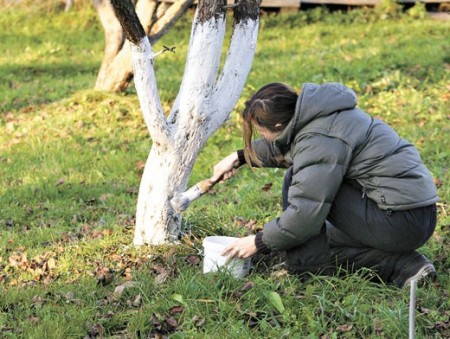
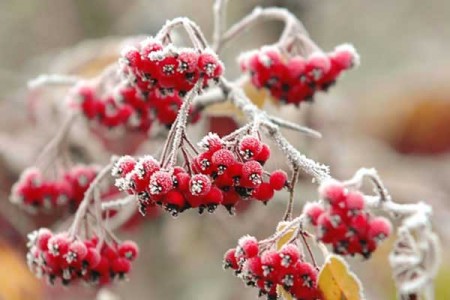
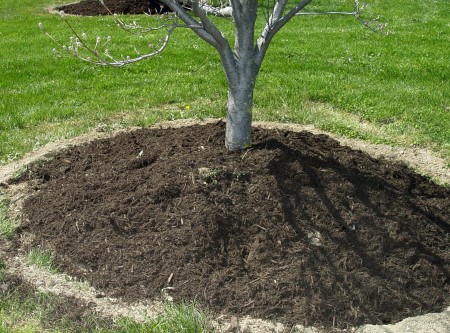

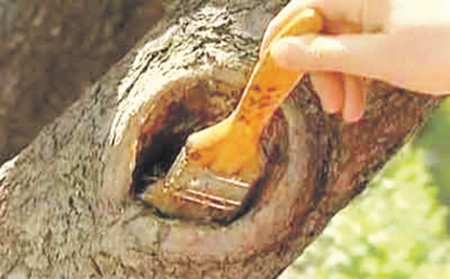
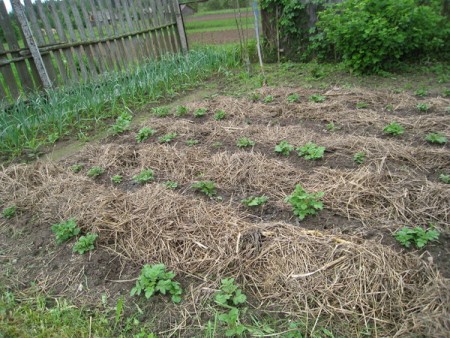
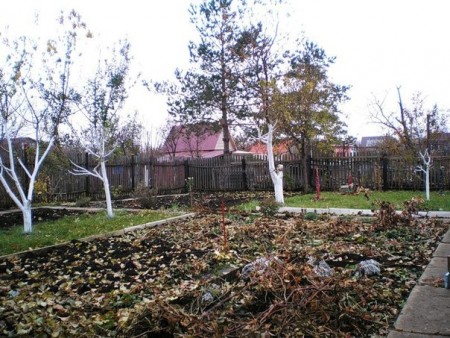
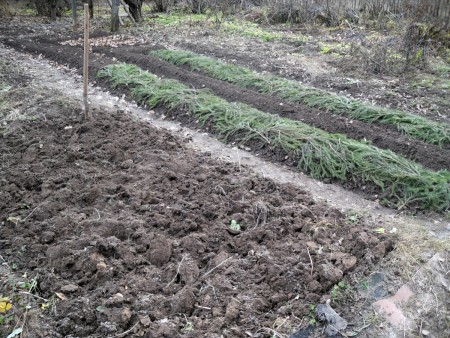
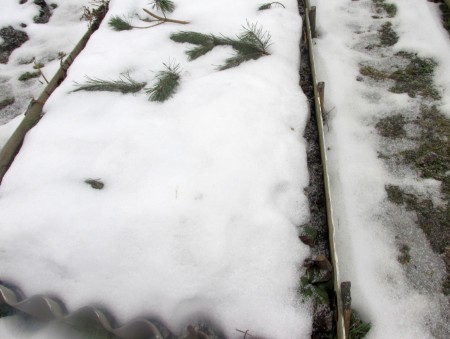
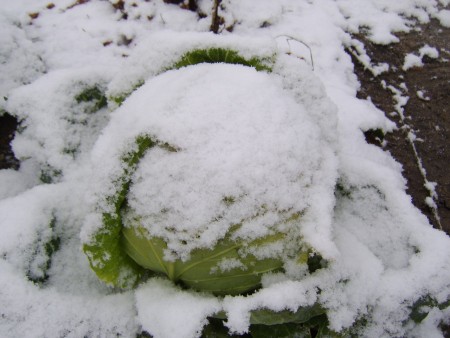
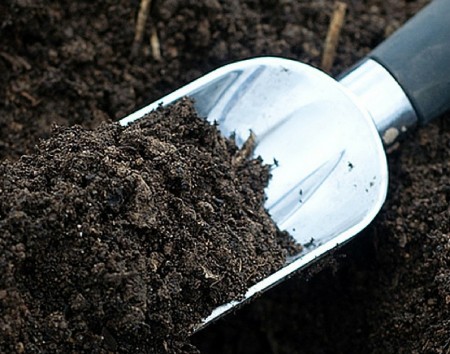
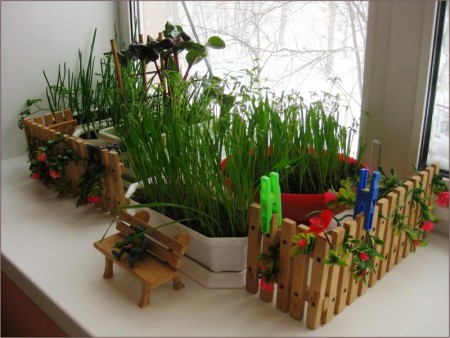

 (9 ratings, average: 4,56 out of 5)
(9 ratings, average: 4,56 out of 5) CUCUMBERS NEVER GET SICK, I'VE BEEN USING ONLY THIS FOR 40 YEARS! I SHARE A SECRET WITH YOU, CUCUMBERS ARE LIKE THE PICTURE!
CUCUMBERS NEVER GET SICK, I'VE BEEN USING ONLY THIS FOR 40 YEARS! I SHARE A SECRET WITH YOU, CUCUMBERS ARE LIKE THE PICTURE! You can dig a bucket of potatoes from each bush. Do you think these are fairy tales? Watch the video
You can dig a bucket of potatoes from each bush. Do you think these are fairy tales? Watch the video
 How our fellow gardeners work in Korea. There is a lot to learn and just fun to watch.
How our fellow gardeners work in Korea. There is a lot to learn and just fun to watch. Eye trainer. The author claims that with daily viewing, vision is restored. They don't charge money for views.
Eye trainer. The author claims that with daily viewing, vision is restored. They don't charge money for views. A 3-ingredient cake recipe in 30 minutes is better than Napoleon. Simple and very tasty.
A 3-ingredient cake recipe in 30 minutes is better than Napoleon. Simple and very tasty. Therapeutic exercises for cervical osteochondrosis. A complete set of exercises.
Therapeutic exercises for cervical osteochondrosis. A complete set of exercises. Which indoor plants match your zodiac sign?
Which indoor plants match your zodiac sign? What about them? Excursion to German dachas.
What about them? Excursion to German dachas.